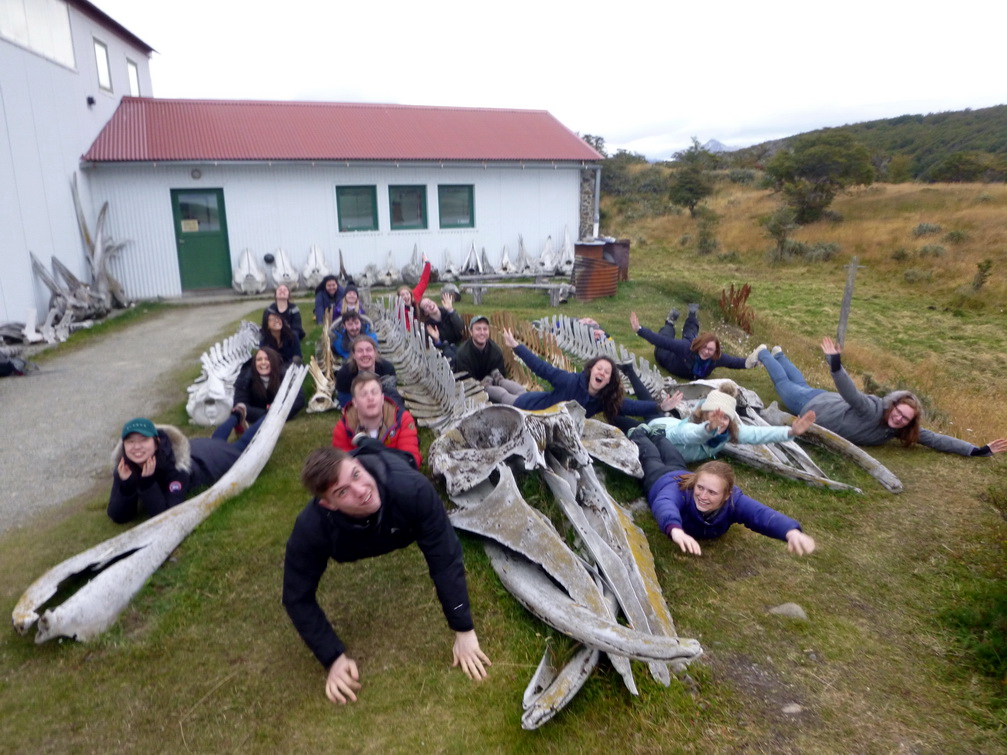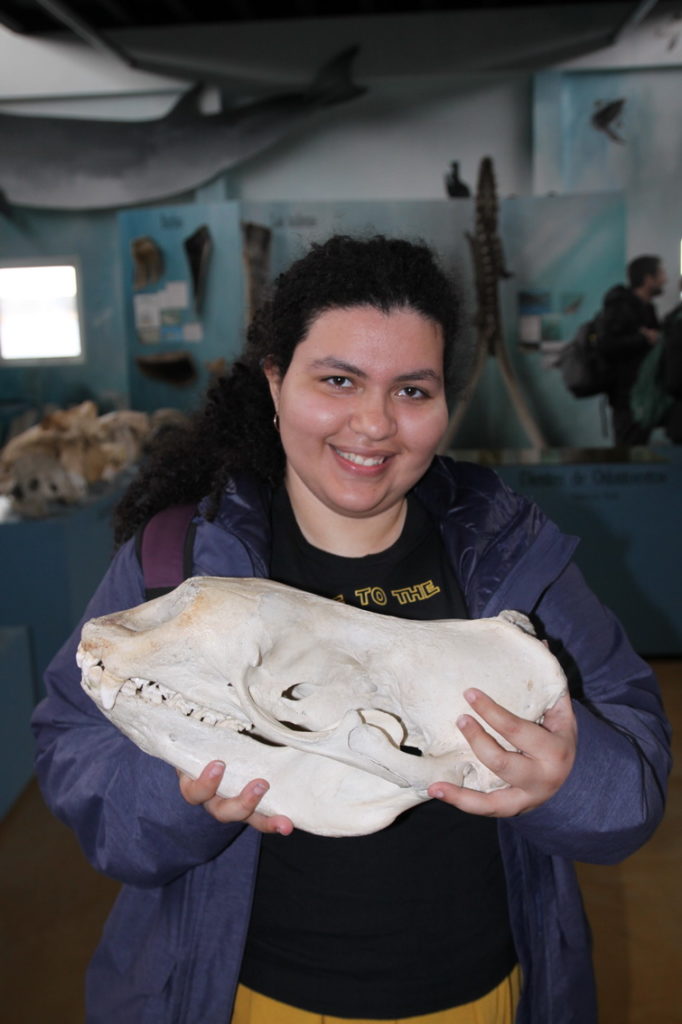29th March 2018 – Estancia Harberton and Museo Acatushún
Our day began with a scenic drives some 85km to the East to Estancia Harberton. While many of us slept right through the two-hour ride, we took a break to stop and marvel at the spectacular scenery along the Beagle Channel.

At Harberton, we stepped into the cosy tearoom and back in time. Our guide told how Thomas Bridges founded Estancia Harberton in the late 19th century as one of the first white people to settle along the Beagle Channel. Thomas had grown up as adopted child in a missionary family in England and had travelled to the Falkland Islands and Argentina. He later settled as missionary himself in what is now Ushuaia with his family. Thomas had learned the Yámana language and compiled the only grammar and dictionary in Yamana and English with more than 30,000 words. When he retired from the mission he was granted land to the East where he built the ranch Harberton and farmed cattle and sheep. The ranch produced wool until 1995 when a harsh winter killed off most of their sheep. However, by this time the ranch received enough tourism for them to rely on the many visitors for business.
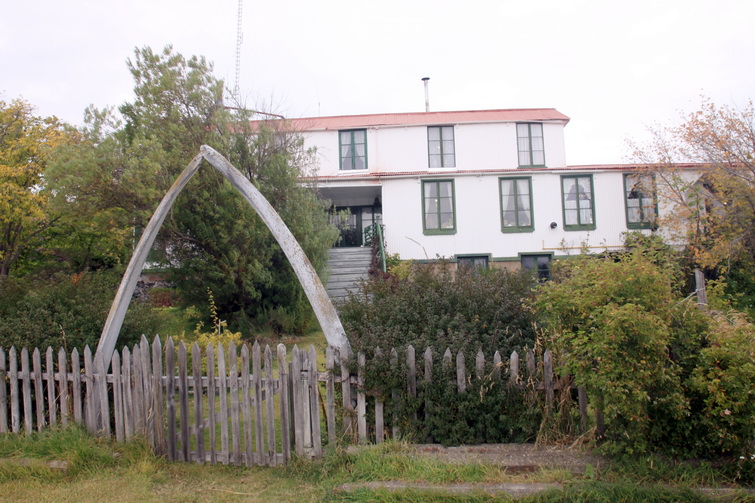
After t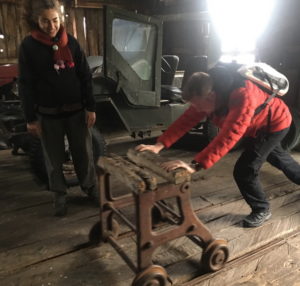 his short history lesson, we stepped outside to explore the many historic buildings and sites. We learned that the main buildings and many of the plants in the garden were brought over from Great Britain. Next, we walked through the buildings where the carpenters and sheep shearers worked and we saw the actual tools and machines they once used.
his short history lesson, we stepped outside to explore the many historic buildings and sites. We learned that the main buildings and many of the plants in the garden were brought over from Great Britain. Next, we walked through the buildings where the carpenters and sheep shearers worked and we saw the actual tools and machines they once used.
For the final part of our tour, we took a short walk up the hill to the nature reserve. Here, we learned about native trees like lenga (beech) and canelo (Winter’s bark), which our guide explained sailors ate to avoid scurvy. This tree also has a peppery fruit which many of us were brave enough to try.
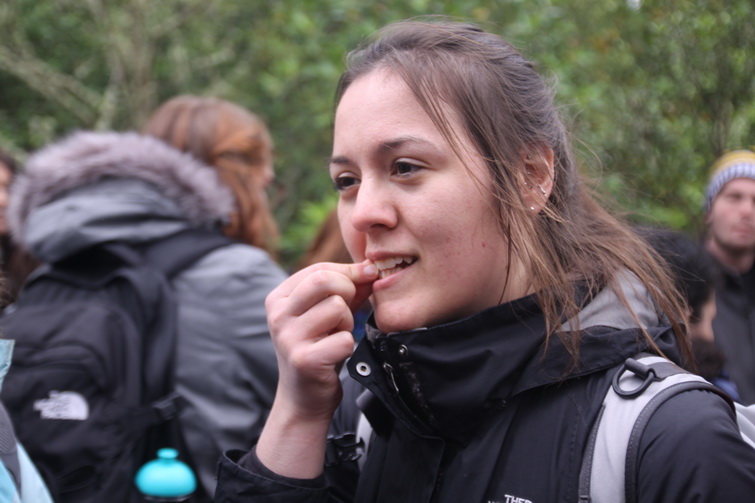
We also learned a little more about the native people and their fascinating habits to survive in this challenging climate. The Yámana women would dive in the channel for shellfish using only seal grease for insulation, which is impressive given the cold. We also saw replicas of Yámana huts. During the winter, the Yámana designed their huts so snow fell off the top, while during the summer they had a round top.  All these historic insights had made us hungry and it was time for lunch in the restaurant. We were surprised to be given crayons and colouring in place mats. It didn’t take long before everyone was head down over the drawings getting creative with colour, but we also managed to enjoy our lunch.
All these historic insights had made us hungry and it was time for lunch in the restaurant. We were surprised to be given crayons and colouring in place mats. It didn’t take long before everyone was head down over the drawings getting creative with colour, but we also managed to enjoy our lunch.

After lunch, we headed down the road to explore the Museo Acatushún which houses a unique collection of marine mammal and bird skeletons. We toured the exhibit and the behind-the-scenes areas, comparing skulls of different seal species and getting fascinated by the complete skeletons of many rare whale species on display.
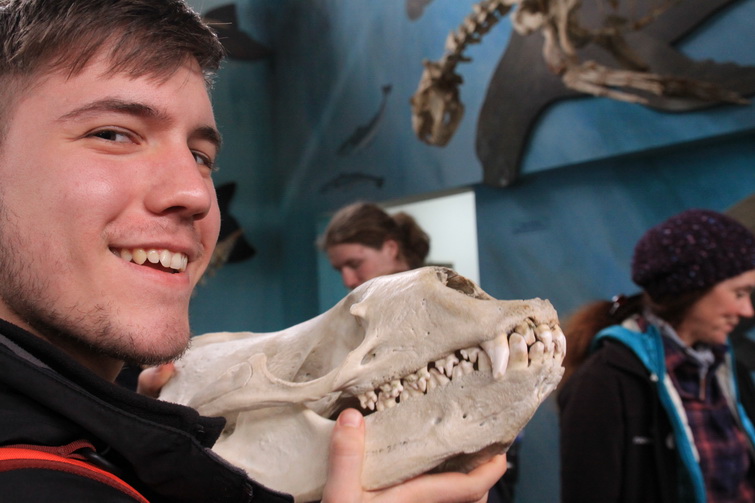
Behind the scenes, our guide Ángeles explained to us how every skeleton is cleaned, stored and assembled. She then took us to the shed where we saw this work in action. This included several whales being cleaned in water, bones being removed from a flipper, and many skulls drying out. The bone house was something to get use to at first (especially the smell) but fascinating nevertheless.
Outside in fresh air again we explored the skeletons of the larger whales. It took several of us to match the length of just one sei whale skeleton.
The visit ended with a short stint under the rafters where more complete skeletons were laid out for us to explore. Today was a long and diverse day with much to take in. Each tour was special in its own way and we learned a lot of history and biology, and I’m grateful to have been here and seen all this.
Written by Diana Pabon


